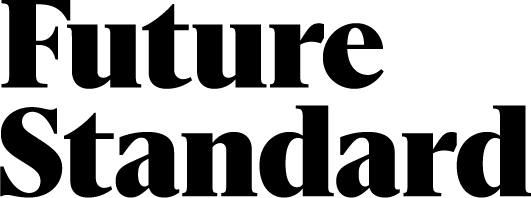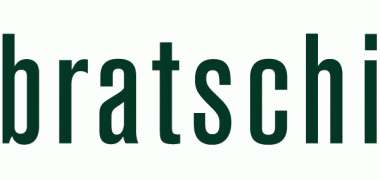SECA Webinar: Asset Allocation and Private Markets
Please find the French and German Version below
This webinar will be held in French, English and German as following:
- Françai: Lundi 19 avril 2021
- English: Tuesday, 20 April 2021
- Deutsch: Mittwoch, 21. April 2021
Traditional models of asset allocation assume that assets are "liquid": freely tradable on organized markets at any time and without significant costs. Private markets do not fall within this framework, since unlisted companies (private equity), their debt (private debt) and unlisted tangible and intangible assets (private real assets) are traded from time to time over-the-counter, and involve significant costs of analysis and transaction. Investing in private markets presents specific challenges, which generally leads investors to delegate this activity to specialized managers. However, the growing success of private market investments poses a challenge: how to integrate them into assetallocation models?
This webinar aims to provide some answers to this question from the book Asset Allocation and Private Markets. We explore the impact of integrating private markets into asset allocations first by comparing two approaches, that of the Yale endowmentand that of the GPFG; then by exploring private market portfolios, integrating the cost of uncalled capital, different scenarios, the use of over-commitment and secondary.
|
Speaker for the English and French Webinar: |
 |
Cyril Demaria is an independent consultant and Affiliate Professor at EDHEC. He was notably Partner in charge of private markets at Wellershoff& Partners, Head of private market research at the Chief Investment Office of UBS, and manager of venture capital and corporate funds. He is an expert with the European Commission, SECA, France Invest, LPEA and Invest Europe. A doctor from theUniversity of St. Gallen, he holds master's degrees in law and geopolitics. He is a graduate of HEC Paris and the Institute of Political Studies of Lyon. He is notably the author of the best seller Introduction to private equity, translated and published in five languages.
|
Speaker for German Webinar: |
 |
Maurice Pedergnana studied economics at the University of St. Gallen from 1984 to 1988. From 1992 to 1993 he was a scholarship holder at Sophia University in Tokyo. Back at the University of St. Gallen, he completed his doctorate with a thesis on "Competitiveness and success factors of Swiss companies in foreign markets (using Japan as an example)". From 1989 to 1991 he worked as an assistant at the Malik Management Zentrum in St. Gallen. He then worked as a management consultant in the field of small and medium-sized enterprises and financial institutions until 2000. From 1997 to 2001 he was also a lecturer at the Zurich University of Applied Sciences in Winterthur and since 2000 at the Lucerne University of Applied Sciences and Arts, where he holds a part-time professorship. This includes heading the Swiss Private Equity & Corporate Finance Association SECA. His main focus is on his management function at Zugerberg Finanz AG in Zug, where he heads the Investment Committee and serves as Chief Economist.
Note: Participants are entitled to a discount on their order of the book after the seminar.
SECA Full Members will receive a free copy in the next days.
Please find additional information in the flyer.
--------------------French Version----------------------
Lundi 19 avril 2021
Les modèles traditionnels d’allocation d’actifs font l’hypothèse que ces derniers sont “liquides”, c’est-à-dire librement échangeables et à tout moment, sur des marchés organisés, et sans frais significatifs. Les marchés privés n’entrent pas dans ce cadre, puisque les sociétés non-cotées (private equity), leur dette (private debt) et les actifs non-cotés matériels et immatériels (private real assets) sont échangeables de manière irrégulière, de gré à gré, et impliquent des frais d’analyse et de transaction importants.Investir en marchés privés présente des défis spécifiques, ce qui conduit généralement les investisseurs à déléguer cette activité à des gérants spécialisés. Néanmoins, le succès croissant des investissements en marchés privés pose un défi: comment les intégrer dans les modèles d’allocation d’actifs?
Ce webinaire a pour objectif de donner quelques éléments de réponse à cette question à partir de l’ouvrage Asset Allocation and Private Markets. Nous exploreronsl’impact de l’intégration des marchés privés dans une allocation d’actifs tout d’abord en comparant deux approches, celles de Yale endowment et celle du GPFG; puis enexplorant des portefeuilles de marchés privés, en intégrant le coût du capital nonappelé, différents scénarios, l’utilisation de l’over-commitment et du secondaire.
Note: Les participants au webinaire ont droit à une réduction sur l’achat de l’ouvrage.
Les membres titulaires de l'SECA recevront un exemplaire gratuit dans les prochains jours.
Vous trouverez des informations supplémentaires dans le dépliant.
--------------------German Version----------------------
Mittwoch, 21. April 2021
Traditionelle Modelle der Asset Allocation gehen davon aus, dass Assets "liquide"sind: jederzeit und ohne nennenswerte Kosten auf organisierten Märkten frei handelbar. Private Märkte fallen nicht in diesen Rahmen, da nicht börsennotierte Unternehmen (Private Equity), deren Schulden (Private Debt) und nicht börsennotierte materielle und immaterielle Vermögenswerte (Private Real Assets) von Zeit zu Zeit ausserbörslich gehandelt werden und mit erheblichen Analyse- und Transaktionskosten verbundensind. Das Investieren in private Märkte stellt besondere Herausforderungen dar, was Investoren im Allgemeinen dazu veranlasst, diese Tätigkeit an spezialisierte Manager zu delegieren. Der wachsende Erfolg von Privatmarkt-Investitionen stellt jedoch eine Herausforderung dar: Wie lassen sie sich in Asset-Allocation-Modelle integrieren?
Dieses Webinar zielt darauf ab, einige Antworten auf diese Frage aus dem Buch Asset Allocation and Private Markets zu geben. Wir untersuchen die Auswirkungen der Integration von Privatmärkten in die Asset Allocation, indem wir zunächst zwei Ansätze, den der Yale-Stiftung und den des GPFG, miteinander vergleichen. Dann untersuchen wir Privatmarktportfolios, indem wir die Kosten des nicht abgerufenen Kapitals, verschiedene Szenarien, den Einsatz von Over-Commitment und Secondary integrieren.Und wir schauen uns konkrete Beispiele aus der Praxis an.
Hinweis: Teilnehmende erhalten einen Rabatt bei Bestellung des Buches nach dem Seminar.
SECA Full Members werden in den kommenden Tagen ein kostenfreies Exemplar erhalten.
Im Flyer finden Sie zusätzliche Informationen zum Webinar.
Partner































